Microwave hyperthermia is the use of electromagnetic energy generated in the human body in the thermal effect, so that the temperature of tissue cells rose to 41 °C to 45 °C effective treatment of high temperature areas, and maintain a certain period of time, accelerate the death of diseased cells, but does not damage normal cells organization. Therefore, the rational design of the structure of the radiator antenna and the accurate calculation of the radiated electric field distribution are the preconditions for correctly determining the temperature field distribution of the microwave hyperthermia process. In this paper, a microwave hyperthermia model was established using CST simulation software. A highly efficient and practical radiating antenna was designed by this model. It has good near-field radiation directionality and ensures a good SAR distribution. 2.1 Antenna Model In order to avoid damage to the tissue cells, a circular waveguide antenna with directionality is usually used, and its operating frequency is 915 MHz. However, through simulation analysis, it is found that the simple circular waveguide antenna has poor electromagnetic near-field focusing. In order to make the antenna have better radiation performance, a circular waveguide and a ridge are used in the design so that the electromagnetic field is concentrated between the two ridges. In order to ensure impedance matching, the outer conductor of the coaxial line is connected to the edge of the ridge waveguide. The inner conductor extends to the opposite ridge to form a monopole radiator. At the same time, the ridge changes linearly and the impedance changes from 50Ω to 165Ω. As shown in Figure 1(a), the radius of the round waveguide is R=7.367cm, the length is L=16.78cm, the wall thickness is t=0.35cm, the depth of the back cavity is l=0.35cm, and the ridge spacing of the waveguide is h1=0.866cm. Oral ridge spacing h2 = 4.48cm, using 50Ω coaxial feed. Due to the large electromagnetic reflection on the surface of the body membrane, the structure must be optimized to further improve the treatment efficiency. In order to obtain better radiation efficiency, a medium is used to fill the circular waveguide antenna cavity in the design, and the thickness of the antenna surface is (a) Adding a ridge circular waveguide antenna section (b) Circular waveguide antenna filled with media and loaded with three layers of media Figure 1 Simulation antenna structure view 2.2 Human Tissue Model According to the size of the radiating antenna aperture and the principle of convenient measurement, the cross section size of the simulated membrane box is determined to be 30cm*30c, and the thickness is 20cm, placed at a distance of 1cm from the radiating antenna; the relative dielectric constant of the human tissue at a frequency of 915MHz Er=51, magnetic permeability 3.1 Specific Absorption Rate (SAR) Distribution Calculation Specific absorption rate (SAR) is defined as the absorption rate of electromagnetic energy per unit mass of biological tissue. The formula is: In the above formula 3.2 Relationship between SAR and Hyperthermia Time Since human tissues absorb heat from electromagnetic waves and generate heat, the relationship between SAR and hyperthermia time can be measured by calorimetry when the temperature rises to the conditions required for treatment. Under the condition that the influence of tissue thermal diffusion can be neglected, the relationship between the measured SAR and the hyperthermia time is expressed as: In the above formula, C is the specific heat of the organization, and the unit is Calculate the CST microwave high frequency simulation software used. The source is a TEM mode, which is added to the input port of the radiating antenna and has a power of 1W. The electromagnetic fields generated by the two radiating antennas before and after the structure optimization and the distribution of the SAR and the S-parameters of the input ports of the radiating antenna are calculated and compared. Electric field intensity modulus (a) Optimization of surface electric field distribution before and after phantom (b) Electric field distribution at 12cm depth before and after optimization Figure 2 Electric field distribution in phantom (a) Optimization of front and rear phantom surface SAR distribution (b) Optimized SAR distribution before and after phantom depth 12cm Figure 3 SAR distribution in phantom Figure 4 s11 Sweep Diagram Before and After Structural Optimization From the electric field distribution of the radiation antenna at different depths of the body film (see Fig. 2), it can be seen that after the medium is filled and the three-layer medium is loaded on the radiation surface, the electric field is focused well and the field strength is greater at the same depth. At the same time, the electric field is evenly distributed to ensure an effective heating area. From SAR in different depth profiles of the body membrane (see Figure 3), the SAR distribution of the antenna before and after optimization is more uniform, and the optimized SAR value is higher than before optimization, the effective heating depth is improved, and the treatment time and radiation dose are reduced. From the comparison chart of s11 (see Figure 4), the lowest point of the curve before and after optimization falls at 915MHz, while the s11 before optimization is -13.12dB, and after optimization is -20.26dB, the energy reflection after optimization is smaller, and the radiation efficiency is obtained. improve. Medical microwave hyperthermia antennas are different from antennas that generally operate in the far field. Hyperthermia antennas act in the near-field area. It should have the function of converting the guided wave on the transmission line into a free space electromagnetic wave and concentrating the radiation energy to form a directional radiation. In this paper, a new type of microwave hyperthermia antenna was designed and improved by simulation, and the computer simulation of microwave tissue heating effect on biological tissue was realized and compared. Through optimization and improvement, the impedance matching of the radiation antenna is better, and the power reflected back into the cavity is smaller, the utilization of radiation power is improved, the microwave transmitter operates normally and is stable, and at the same time, the radiation direction of the near-field electric field is significantly improved. , To ensure a good consistency with the treatment site, to achieve high efficiency treatment, to avoid damage to the surrounding normal tissues and organs, to improve the clinical efficacy of microwave tumor hyperthermia treatment is of great significance.
ZGAR AZ Ice Box Vape
ZGAR electronic cigarette uses high-tech R&D, food grade disposable pod device and high-quality raw material. All package designs are Original IP. Our designer team is from Hong Kong. We have very high requirements for product quality, flavors taste and packaging design. The E-liquid is imported, materials are food grade, and assembly plant is medical-grade dust-free workshops.
Our products include disposable e-cigarettes, rechargeable e-cigarettes, rechargreable disposable vape pen, and various of flavors of cigarette cartridges. From 600puffs to 5000puffs, ZGAR bar Disposable offer high-tech R&D, E-cigarette improves battery capacity, We offer various of flavors and support customization. And printing designs can be customized. We have our own professional team and competitive quotations for any OEM or ODM works.
We supply OEM rechargeable disposable vape pen,OEM disposable electronic cigarette,ODM disposable vape pen,ODM disposable electronic cigarette,OEM/ODM vape pen e-cigarette,OEM/ODM atomizer device.
Disposable E-cigarette, ODM disposable electronic cigarette, ZGAR AZ ice box vape , Device E-cig, OEM disposable electronic cigarette ZGAR INTERNATIONAL(HK)CO., LIMITED , https://www.oemvape-pen.com The three-layer medium realizes the matching transformation. This structure can not only counteract the effect of the reflected echo from the phantom surface on the antenna, but also enhance the directionality of the electric field and reduce the leakage of the electric field energy. The structure is shown in Figure 1.
The three-layer medium realizes the matching transformation. This structure can not only counteract the effect of the reflected echo from the phantom surface on the antenna, but also enhance the directionality of the electric field and reduce the leakage of the electric field energy. The structure is shown in Figure 1. 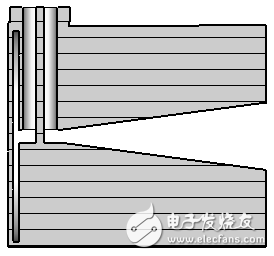
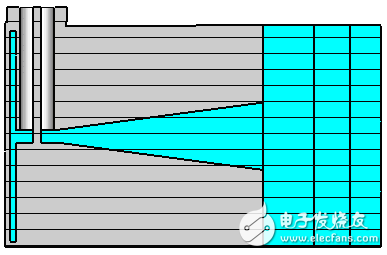
 Conductivity
Conductivity  .
. 
 with
with  Respectively indicate the density and conductivity of the tissue.
Respectively indicate the density and conductivity of the tissue.  , The SAR of the conductor and insulation medium of the radiating antenna is zero.
, The SAR of the conductor and insulation medium of the radiating antenna is zero. 
 ,
,  The time for hyperthermia, the unit is s, is the temperature rise to change, the unit is K. The specific heat of the tissue is constant, so from the above formula, it can be concluded that in the process of heating treatment, the greater the SAR, the faster the temperature rise, the shorter the treatment time, and the smaller the radiation dose.
The time for hyperthermia, the unit is s, is the temperature rise to change, the unit is K. The specific heat of the tissue is constant, so from the above formula, it can be concluded that in the process of heating treatment, the greater the SAR, the faster the temperature rise, the shorter the treatment time, and the smaller the radiation dose.  In the XOY plane, the phantom is placed 1 cm away from the antenna radiation surface, as shown in Figure 2. Figure 3 shows the SAR distribution of the phantom at different depths. Figure 4 shows the s11 sweep. In Figures 2 and 3, the left side is the pre-optimization profile and the right is the optimized profile.
In the XOY plane, the phantom is placed 1 cm away from the antenna radiation surface, as shown in Figure 2. Figure 3 shows the SAR distribution of the phantom at different depths. Figure 4 shows the s11 sweep. In Figures 2 and 3, the left side is the pre-optimization profile and the right is the optimized profile. 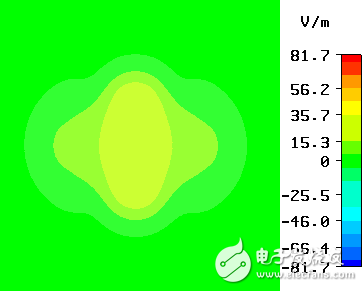

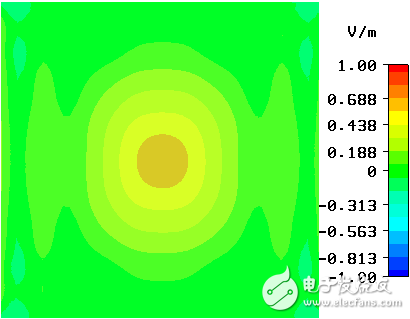
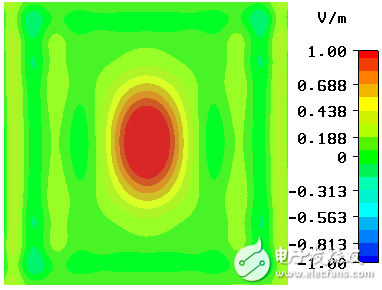
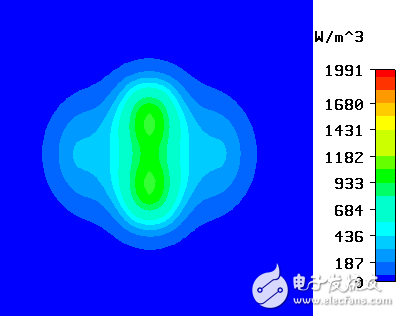
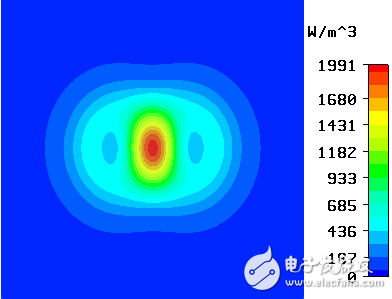


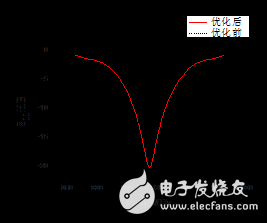


Design and Optimization of Microwave Hyperthermia Antennas
1 Introduction